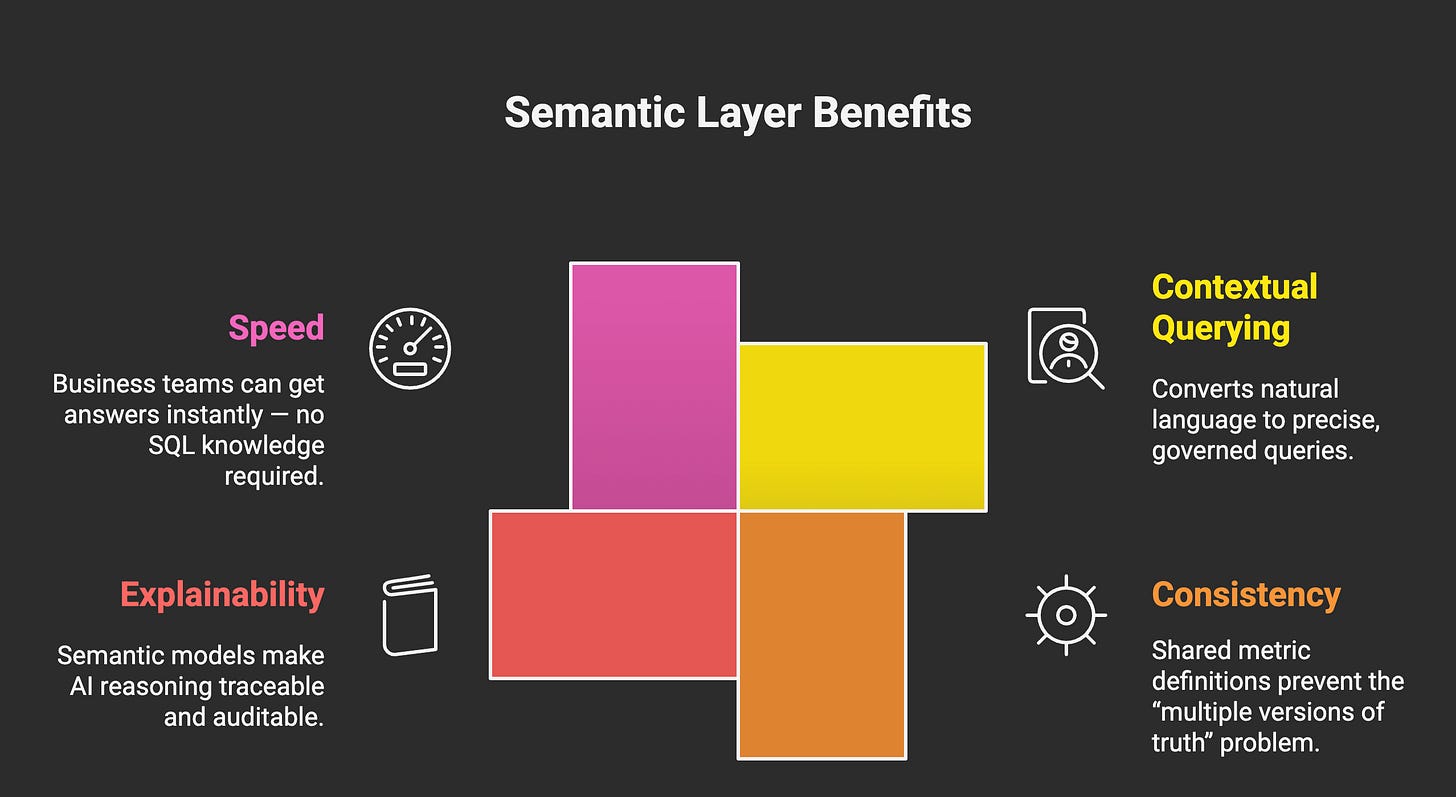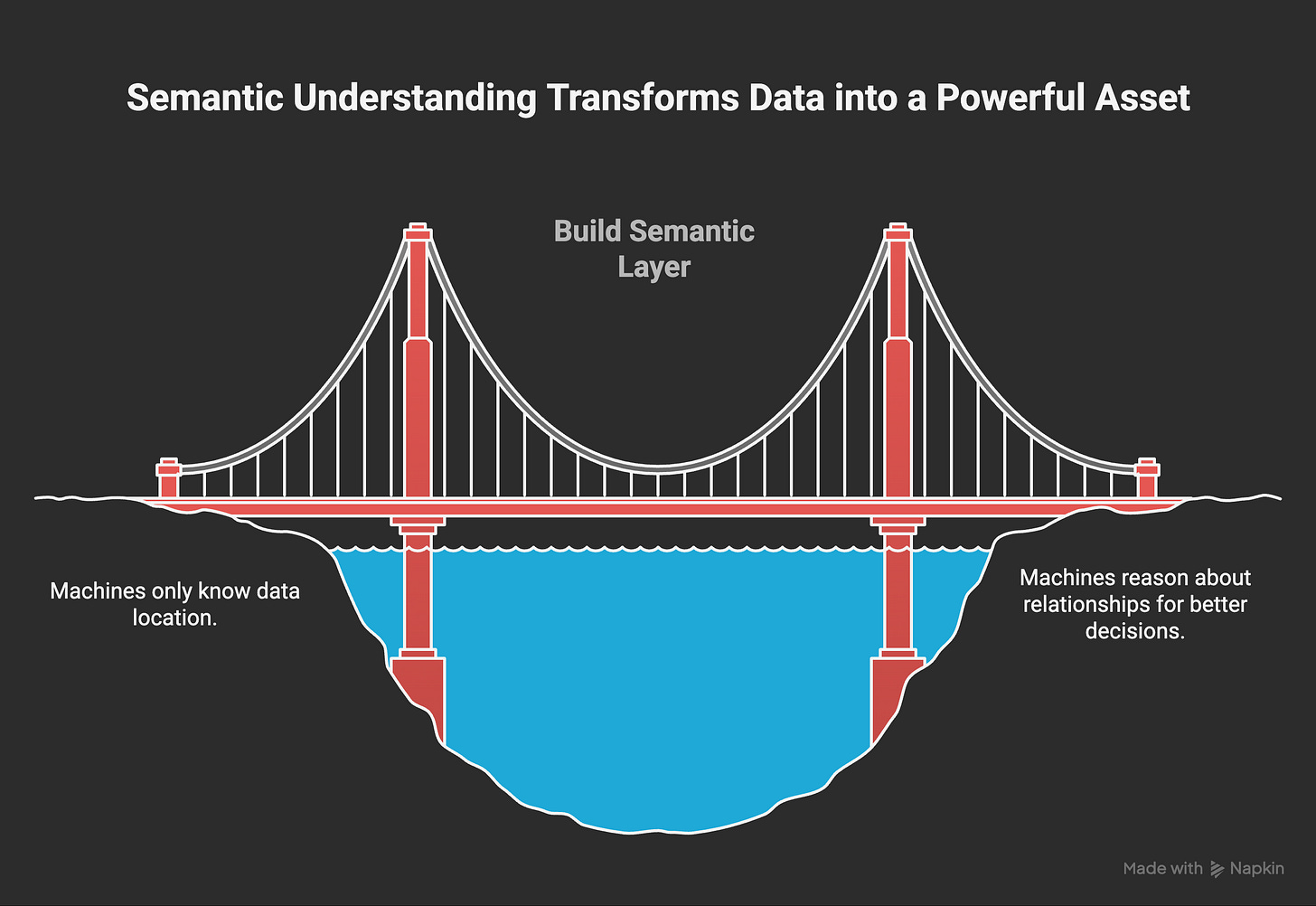Data in Motion: The 7 Foundational Shifts Powering AI-Native platforms(Part-2)
The rise of semantic data, hybrid stores, and the convergence of analytics + intelligence.
Artificial Intelligence is getting all the spotlight , but the true transformation and magic hallens on the backend and platform layer — deep within the data layer.
Over the past decade, we’ve evolved from collecting data to connecting it. AI has shifted expectations: it doesn’t just need more data; it needs smarter, faster, and more context-aware data systems.
Traditional warehouses and dashboards were built for a world of human analysts. But AI demands something else entirely continuous, connected, and semantically rich data that can flow through models in real time.
This is the story of seven foundational shifts that are quietly redefining modern architectures, these 7 shifts are the the building blocks of AI-native data ecosystems.
Note read about Shift -1 From Static Data Warehouses → Dynamic Data Lakes
Shift #2: From Relational Thinking → Semantic Understanding
For decades, our data systems were mostly built around relational thinking tables, keys, joins, and rigid schemas. These databases excelled at answering what happened: “How many customers bought Product X last month?”
But in the AI era, that’s not enough. Database are expected to manage and maintain more than relational data. Modern systems must also understand why something happened and how different entities connect.
To do that, data has to move beyond structure — it has to carry meaning.
What has Changed
Traditional databases store facts.
Semantic systems store relationships and context.
A relational table might record:
Customer_ID = 12345, Product = ‘Laptop’, Price = $1200.A semantic model understands:
Customer 12345 purchased Laptop, which belongs to Electronics, and this event occurred after a marketing email campaign.
That web of relationships gives data context, allowing AI systems to reason, connect dots, and answer questions that span multiple domains.
This transition from structure to semantics mirrors how humans process information: we don’t just remember facts; we understand connections between them.
Core Idea: Building a Semantic Layer
A semantic layer sits on top of raw data and describes it in business-friendly terms like metrics, dimensions, and relationships, instead of raw SQL columns.
It’s the translator between:
Human language (what the business asks), and
Machine data (how databases actually store it).
Think of it as a dictionary that defines what “revenue,” “customer,” or “churn” mean across the organization , so every dashboard, model, and chatbot uses consistent definitions.
This layer has become the foundation for AI-native analytics.
Large Language Models (LLMs) use it to interpret user questions and generate accurate, context-aware responses without needing manual SQL.
Why It Matters for AI
LLMs and AI agents need to reason over structured enterprise data — not just text.
Without semantics, a query like “Show me this quarter’s high-value customers in EMEA” breaks down because “high-value” and “EMEA” don’t exist as database columns.
Semantic understanding bridges this gap.
Key Benefits:
Contextual Querying: Converts natural language to precise, governed queries.
Consistency: Shared metric definitions prevent the “multiple versions of truth” problem.
Explainability: Semantic models make AI reasoning traceable and auditable.
Speed: Business teams can get answers instantly — no SQL knowledge required.
In short, semantics make data talk — and AI listen correctly.
Lets see some Real-World Examples
1. dbt Semantic Layer – One Definition, Many Uses
The dbt Semantic Layer allows teams to define metrics (like revenue, ARR, or churn rate) once and access them from multiple tools — notebooks, BI dashboards, or AI copilots.
This ensures that when an analyst and an LLM both query “monthly revenue,” they get the same, governed number.
Used by data teams at Canva, HubSpot, and JetBlue.
Enables faster experimentation because LLMs can safely interpret metrics.
2. AtScale and Cube.js – Semantic Models for BI + AI
Tools like AtScale and Cube.js expose enterprise data as semantic APIs.
Instead of exposing SQL tables, they publish concepts such as customers, sales, and regions that can be consumed directly by LLMs or chat-based analytics.
In practice:
A user can ask, “What were Q4 sales in Europe compared to last year?”
The AI layer interprets “Q4,” “sales,” and “Europe” through the semantic model and runs the correct query — no human joins or filters required.
AtScale reported a 40% reduction in reporting cycle time and consistent KPI alignment across 12 departments after adopting semantic modeling.
3. Google AlloyDB AI – Embedding Semantics Into the Database
Google’s AlloyDB AI takes the idea one step further: it integrates vector embeddings and semantic search directly inside a PostgreSQL-compatible database.
This means developers can run hybrid queries — combining relational filters (price > 100) with semantic similarity (description ≈ “wireless headphones”).
It’s an early example of how the semantic layer is collapsing into the database itself, allowing AI models to query both structured and meaning-based information at once.
Use Case: Conversational Analytics in Retail
A global retailer wanted to let store managers ask natural-language questions about sales and inventory.
By deploying Cube.js with a dbt Semantic Layer, managers could type:
“Show me this week’s top-selling products by region, excluding out-of-stock items.”
Behind the scenes:
The LLM interprets the request through the semantic layer.
Cube.js converts it to governed SQL.
The BI tool visualizes it instantly.
The result?
Query time dropped from 30 minutes to under 10 seconds.
Manual SQL requests to the analytics team fell by over 60%.
Insights were now accessible to non-technical users across 200+ stores.
Final thoughts—
The shift from relational to semantic isn’t about replacing databases — it’s about teaching data to speak the language of meaning.
AI thrives when it can reason about relationships, not just rows.
“Data becomes powerful when machines understand what it means, not just where it lives.”
As organizations build their AI-native architectures, the semantic layer will become the bridge between human intent and machine intelligence — the connective tissue that lets LLMs and business data truly understand each other.







